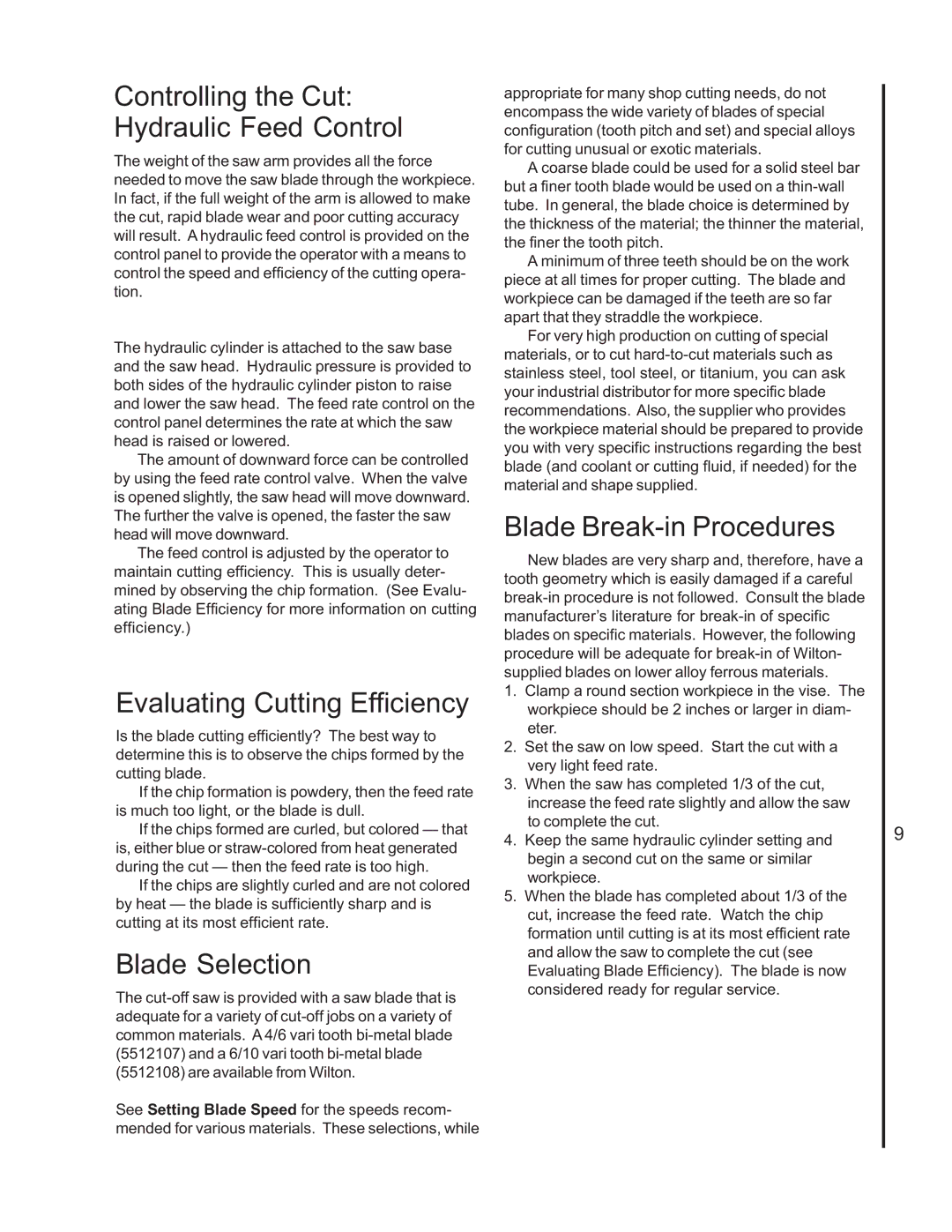Controlling the Cut: Hydraulic Feed Control
The weight of the saw arm provides all the force needed to move the saw blade through the workpiece. In fact, if the full weight of the arm is allowed to make the cut, rapid blade wear and poor cutting accuracy will result. A hydraulic feed control is provided on the control panel to provide the operator with a means to control the speed and efficiency of the cutting opera- tion.
The hydraulic cylinder is attached to the saw base and the saw head. Hydraulic pressure is provided to both sides of the hydraulic cylinder piston to raise and lower the saw head. The feed rate control on the control panel determines the rate at which the saw head is raised or lowered.
The amount of downward force can be controlled by using the feed rate control valve. When the valve is opened slightly, the saw head will move downward. The further the valve is opened, the faster the saw head will move downward.
The feed control is adjusted by the operator to maintain cutting efficiency. This is usually deter- mined by observing the chip formation. (See Evalu- ating Blade Efficiency for more information on cutting efficiency.)
Evaluating Cutting Efficiency
Is the blade cutting efficiently? The best way to determine this is to observe the chips formed by the cutting blade.
If the chip formation is powdery, then the feed rate is much too light, or the blade is dull.
If the chips formed are curled, but colored — that is, either blue or
If the chips are slightly curled and are not colored by heat — the blade is sufficiently sharp and is cutting at its most efficient rate.
Blade Selection
The
See Setting Blade Speed for the speeds recom- mended for various materials. These selections, while
appropriate for many shop cutting needs, do not encompass the wide variety of blades of special configuration (tooth pitch and set) and special alloys for cutting unusual or exotic materials.
A coarse blade could be used for a solid steel bar but a finer tooth blade would be used on a
A minimum of three teeth should be on the work piece at all times for proper cutting. The blade and workpiece can be damaged if the teeth are so far apart that they straddle the workpiece.
For very high production on cutting of special materials, or to cut
Blade Break-in Procedures
New blades are very sharp and, therefore, have a tooth geometry which is easily damaged if a careful
1.Clamp a round section workpiece in the vise. The workpiece should be 2 inches or larger in diam- eter.
2.Set the saw on low speed. Start the cut with a very light feed rate.
3.When the saw has completed 1/3 of the cut, increase the feed rate slightly and allow the saw to complete the cut.
4.Keep the same hydraulic cylinder setting and begin a second cut on the same or similar workpiece.
5.When the blade has completed about 1/3 of the cut, increase the feed rate. Watch the chip formation until cutting is at its most efficient rate and allow the saw to complete the cut (see Evaluating Blade Efficiency). The blade is now considered ready for regular service.
9
